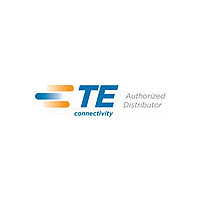1055478-1 TE Connectivity, 1055478-1 Datasheet - Page 119

1055478-1
Manufacturer Part Number
1055478-1
Description
Connector Accessories Cable Bender
Manufacturer
TE Connectivity
Type
Benderr
Datasheet
1.1055478-1.pdf
(126 pages)
Specifications of 1055478-1
Lead Free Status / RoHS Status
RoHS Not Applicable
length of 4 inches traveling on a cable that changes from 50
ohms to 25 ohms. The reflection coefficient is -.33, which
means that one third of the incident voltage is reflected
toward the source. Assume that one inch (one quarter wave-
length) down the cable the impedance changes back to 50
ohm. Again, one third of the wave is reflected, but without
any phase shift. It travels back to the first interface where one
third of this reflected wave is reflected back toward the sec-
ond interface. Two thirds of the wave is transmitted through
the interface and travels back to the source. Since the first
(reflected) wave is shifted 180 degrees at the reflection, and
the second (transmitted-reflected-transmitted) wave is shifted
180 degrees because it traveled the one inch separation
twice, the two waves are in phase. The net result is that the
VSWR is much larger because the length of the 25 ohm sec-
tion was just the right length to cause a resonance. If the
length of the 25 ohm section had been one half wave-
length, the two waves would have interfered and the VSWR
would be at a minimum.
In summary, avoid cable lengths, printed circuit board paths,
or connectors that are multiple of one quarter ( /
of the intended signal transmission wavelength. Coaxial
cables, when manufactured, also have periodic variations in
diameter that result in periodic changes in impedance (Zo),
that can cause significant levels of reflected signal (high
return loss) at specific frequencies.
Catalog 1308940
Revised 5-03
www.tycoelectronics.com
1 V out
V in = 1 Volt V
V in
(Caused by Impedance Mismatch)
.33V
.15V
50
R
Multiple Wave Reflections
=.48 Volt
Dimensions are in inches and
millimeters unless otherwise
specified. Values in brackets
are metric equivalents.
.66V
.22V
Impedance
Figure 17
Mismatch
25
.07V
/ 4
/ 4
RF Connectors
Appendix A - Theory and Application
50
.44V
V out
V out
4
, 3 /
=
Dimensions are shown for
reference purposes only.
Specifications subject
to change.
.52 Volt
4
, etc.)
Reflections of Digital Signals
The previous discussions dealing with attenuation,
reflections and standing waves can apply to digital signals
with some extra thought.
A single pulse can be thought of as a combination of high
frequency sine waves. The maximum frequency component
in a square wave pulse can be calculated by this equation:
Attenuation of the frequencies necessary to support the short
risetime will produce a slower rise and possibly prohibit the
pulse from ever reaching the detector. This ‘slurring’ of the
pulse is similar to the behavior of an RC circuit and the
attenuation is sometimes called capacitive attenuation.
A series of pulses can demonstrate resonance. If a portion of
a pulse is reflected at each interface, it is possible for them to
come together and add up to form a new phantom pulse.
The critical frequency here is the bit rate. Think of a sine
wave with a frequency the same as the bit rate; if it will
resonate in the cable, the pulses will also. Extra pulses
caused by resonance might easily result in an error signal
from the receiving system requesting a retransmittal. The
final result would be a communication system that is much
slower than intended.
Cut-off Frequency
The cut-off frequency of a coaxial transmission line is the
frequency at which modes of energy transmission, other
than the “TEM” mode, can be generated.
Types of Transmission Lines
Twin Lead transmission cable is generally used where
impedance matching alone is important, since it provides
only minimal shielding. Impedance values of 300 ohms and
600 ohms are common. Lower impedance values require
closer spacing of the conductors and are not normally avail-
able in this type of cable. A typical application for twin lead
cable is in antenna lead wire for television sets.
Twisted Pair is a variation of the twin lead type. It consists
of two lengths of ordinary hookup wire twisted together. A
twisted pair provides relatively constant impedance plus
better magnetic shielding than twin lead cables. It is flexi-
ble, inexpensive, easy to terminate and is used extensively
by the computer industry. However, it should not be used
when maximum shielding is required.
(Continued)
USA: 1-800-522-6752
Canada: 1-905-470-4425
Mexico: 01-800-733-8926
C. America: 52-55-5-729-0425
f = GHz when “t” is in nanoseconds
(D and d are measured in inches)
fco =
fco = ______ (in GHz)
f = 0.35/rise time
where
7.5
(D+d)
7.5
(D+d)
South America: 55-11-3611-1514
Hong Kong: 852-2735-1628
Japan: 81-44-844-8013
UK: 44-141-810-8967
(in GHz)
7119
7
























